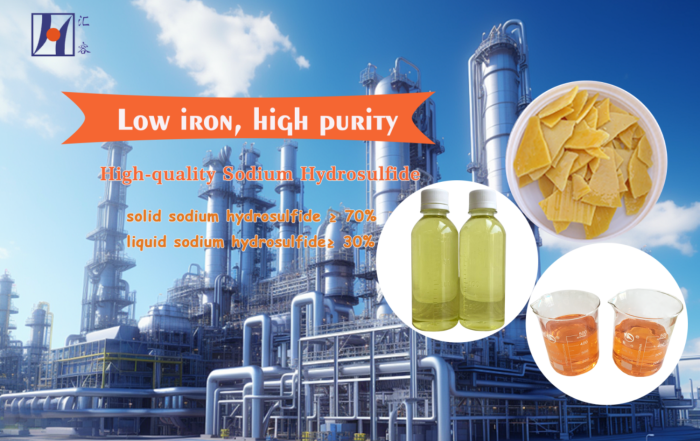Sodium hydrosulfide (NaHS) is a compound that is easily soluble in water and alcohols, with a strong foul odor and an alkaline solution. It has a wide range of applications in industry, such as the synthesis of organic intermediates and the preparation of sulfur dyes as additives in the dye industry, hair removal and tanning of raw hides in the leather industry, removal of monomer sulfur from activated carbon desulfurizers in the fertilizer industry, copper ore beneficiation in the mining industry, and sulfite dyeing in the production of artificial fibers.
When sodium hydrosulfide crystallizes, the following methods can be used for treatment:
1. Physical Processing Method:
(1) Heating: Due to the melting point of sodium hydrosulfide being 350 ℃, it can be melted by heating and then dissolved again in an appropriate solvent.
(2) Centrifugal separation: Use a decanter centrifuge to centrifuge the concentrated solution of sodium hydrosulfide, separating crystalline salts and molten sodium hydrosulfide.
(3) Vacuum drying: Send the separated crystalline salt into a dryer for dehydration, and then collect the dried crystalline salt as a water treatment agent for later use.
2. Chemical Treatment Methods:
(1) Adjust pH value: Adjust the pH value of the solution by adding an appropriate amount of acid or base to promote the dissolution of sodium hydrosulfide.
(2) Using solvents: If crystallization is caused by solvent evaporation, an appropriate amount of solvent (such as water or alcohol) can be added to dissolve sodium hydrosulfide again.
3. Safety Precautions:
When handling sodium hydrosulfide crystals, appropriate protective equipment such as gloves, goggles, and protective clothing should be worn to prevent irritation to the skin and eyes. The operation should be carried out in a well ventilated environment to avoid inhaling its toxic gases. When storing and handling sodium hydrosulfide, safety operating procedures should be strictly followed to avoid contact with substances such as oxygen and oxidants, in order to prevent fires or explosions.
4. Purification Method:
A method for purifying sodium hydrosulfide comprises sending a concentrated solution of sodium hydrosulfide to a centrifuge for centrifugation, separating crystalline salts and molten sodium hydrosulfide; Then, the separated molten sodium hydrosulfide is sent to a vacuum insulation tank for insulation, and then pumped into a vacuum rake cooler for cooling and solidification into thin flakes; Finally, the sodium hydrosulfide flakes are fed into the automatic bagging machine through a star shaped valve for bagging. When dealing with the crystallization of sodium hydrosulfide, the reasons for crystallization should be considered and appropriate physical or chemical methods should be selected for treatment. Meanwhile, safe operation is crucial to ensure the safety of operators and the protection of the environment.




